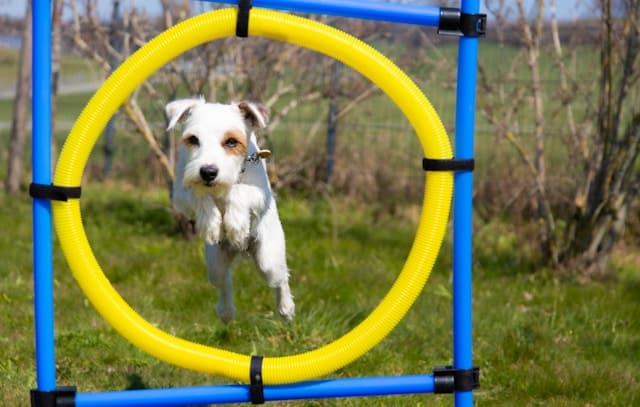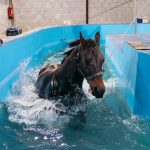Unleashing your corgi’s full potential by engaging them in agility training can be both exciting and rewarding. Agility training is a popular canine sport where dogs are directed by their handlers through a variety of obstacles. From jumping bars to weaving through poles, the sport requires a significant amount of obedience, skill and, of course, agility. The American Kennel Club (AKC) recognizes agility as a competitive sport that can be fun and challenging for both handler and dog. Let’s explore how you can train your Corgi to take on these agility courses with style.
Choose the Right Agility Equipment
The world of canine sports involves a variety of agility equipment designed to test your dog’s speed, control, and obedience. As a handler, you will be guiding your corgi through obstacles, such as jumps, weave poles, and tunnels.
En parallèle : How to Choose the Right Type of Scratching Post for a Maine Coon Cat?
Choosing the right equipment is crucial for your dog’s training. It is advisable to start with basic equipment like hurdles or jump bars. These can be adjusted to a height suitable for your corgi’s size, ensuring they can comfortably jump over them. As your corgi masters the basics, more complex equipment such as tunnels and weaving poles can be introduced gradually.
Adaptability is key when it comes to agility training. Remember that agility courses are not cookie-cutter; they vary in complexity and arrangement. This means your corgi should be versatile enough to handle different course layouts.
A lire également : What Are the Best Cat Trees for Large Breeds Like Maine Coons?
Establish a Solid Obedience Foundation
Before your corgi can tackle agility courses, they need to have a solid obedience foundation. Commands like sit, stay, come, lie down, and heel are essential skills your corgi needs to master.
Obedience training should begin at a young age to ensure your corgi grows into a well-behaved and obedient dog. Incorporate these commands into your everyday routine. For example, asking your dog to sit before meal times, or to stay while you open the door. Consistency is key to successful obedience training.
Remember, patience is crucial during this stage. Your corgi may not get the commands right the first time, but with consistent training and positive reinforcement, they will eventually master these essential obedience skills.
Develop Basic Agility Skills
Once your corgi has mastered obedience training, it’s time for them to start developing basic agility skills. This includes running through tunnels, jumping over hurdles, and weaving through poles.
To start with, use a tunnel with a large diameter to ensure your corgi feels comfortable. Gradually decrease the diameter as your dog becomes more confident. When it comes to hurdles, start with low heights and gradually increase as your corgi’s confidence and skill level improve.
Weaving through poles is one of the most challenging skills in agility training. Start by spacing the poles widely apart. As your dog becomes better at weaving, gradually decrease the space between poles.
Remember to always keep the training sessions fun and positive. The goal is for your corgi to associate agility training with fun and rewarding experiences.
Participate in AKC Agility Events
Once your corgi has mastered the agility course at home, consider participating in AKC agility events. These events are competitive, but they also provide a fun and friendly environment for both dogs and handlers.
Before you can participate in official AKC events, your dog will need to be registered with the AKC. Additionally, your corgi should have reached a certain level of proficiency in agility training.
Participating in these events can be a great way for you and your corgi to meet and interact with other agility enthusiasts. Additionally, these events can provide a platform for your corgi to show off their skills and potentially earn titles and ribbons.
Balance Training and Rest
While it’s important to train your corgi regularly to keep their skills sharp, it’s also equally important to ensure they get plenty of rest. Overtraining can lead to burnout and injuries, so make sure your corgi has ample time to rest and recover after each training session.
A balanced diet is also crucial in keeping your corgi healthy and energized. Make sure they are getting the right nutrients to support their active lifestyle.
Lastly, always remember to keep the training sessions enjoyable. Dogs are more likely to perform well when they are having fun. So, keep the rewards coming and always end each session on a positive note.
Incorporate Positive Reinforcement
Instilling a joyful spirit in your furry friend during agility training is an essential part of the process. Positive reinforcement, a method often used in dog training, can go a long way in effectively teaching your corgi to navigate through agility courses. This method encourages desired behavior by rewarding your dog with treats, praise, or playtime each time they correctly execute a command or complete an obstacle.
Positive reinforcement helps to motivate your dog and make training enjoyable. It also boosts your corgi’s confidence, making it easier for them to tackle new and challenging obstacles.
Begin by rewarding your dog every time they complete an obstacle correctly. Gradually reduce the frequency of rewards as your corgi becomes more proficient, making sure to continue rewarding intermittently to keep them motivated.
Remember, the key to successful positive reinforcement is timing. Be sure to reward your corgi as soon as they complete the task correctly, so they associate the reward with their successful action.
Gradually Increase the Complexity of the Agility Course
Once your corgi has mastered basic agility skills using straightforward equipment and simple course layouts, it’s time to gradually increase the complexity of the agility course. This gradual increase will continue to challenge your dog and will contribute to improved skill and agility.
Start by introducing new obstacles into the course, such as teeter-totters or tire jumps. These new additions will keep the training exciting for your dog and will require them to use their obedience and agility skills in new ways.
Next, consider altering the arrangement of the agility equipment on the course. Unlike some other dog breeds, corgis are known for their adaptability, and changing the course layout can test and strengthen this trait.
Again, the primary goal is to keep the agility training fun and stimulating for your corgi. So, continue to reward your dog and celebrate their achievements as they navigate the increasingly complex agility course.
Conclusion
Training your corgi to navigate agility courses for canine sports is a rewarding process that not only strengthens your bond with your furry friend but also provides mental and physical stimulation for them. The key to successful dog agility training is building a solid foundation of obedience, gradually introducing agility skills and equipment, positively reinforcing desired behaviors, and gradually increasing the complexity of the agility course while keeping the process fun and enjoyable for your corgi.
Remember, patience and consistency are just as important as adaptation and skill in agility training. Participating in AKC agility events can provide a great platform for you and your dog to meet other enthusiasts and showcase your corgi’s agility skills. Proper rest and nutrition also play a crucial role in keeping your corgi healthy, happy, and ready to tackle any agility course. With the right approach and mindset, your corgi will soon be a star in the exciting world of canine sports.











